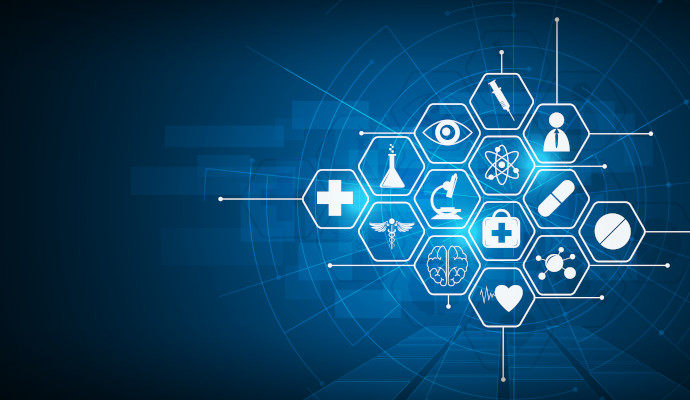Mount Sinai Predictive AI Flags Drugs That May Cause Birth Defects
New AI tool sheds light on the relationship between drugs, genes, and birth defects, allowing researchers to predict which medicines may cause congenital disabilities.

Source: Getty Images
- Researchers at the Icahn School of Medicine at Mount Sinai have developed an artificial intelligence (AI) model to predict which medicines and preclinical compounds may cause birth defects.
The model, known as a ‘knowledge graph,’ was detailed in a study published this week in Communications Medicine. This type of AI tool helps model complex relationships and infer new knowledge from that data.
In this study, the researchers leveraged a knowledge graph to help map the relationship between drugs, genes, and birth defects.
The press release published alongside the study indicates that the work is the first of its kind to investigate the causes of birth defects. According to the United States Centers for Disease Control and Prevention (CDC), birth defects are common, impacting one in every 33 babies born in the US annually.
These conditions, also called congenital disabilities, can impact nearly any part of the body and can be serious. The CDC estimates that as of 2020, birth defects accounted for 20 percent of all infant deaths, representing a major cause of mortality in this population.
READ MORE: Blood Test Uses AI, Biomarkers to Identify Infant Heart Defects Before Birth
This has led to a significant number of studies investigating how these defects can be prevented and treated. Many of these birth defects are not preventable, but researchers hope that insights into the causes of these abnormalities can guide the development of prevention strategies.
However, the causes of congenital disabilities are largely unknown. The study authors noted that defects are believed to result from a combination of factors, including genetics and environmental factors. Substances found in medicines, foods, and cosmetics used during pregnancy also have the potential to lead to birth defects, leading the researchers to explore the interactions between these factors.
“We wanted to improve our understanding of reproductive health and fetal development, and importantly, warn about the potential of new drugs to cause birth defects before these drugs are widely marketed and distributed,” says Avi Ma’ayan, PhD, senior author of the paper, who serves as professor of Pharmacological Sciences and director of the Mount Sinai Center for Bioinformatics at Icahn Mount Sinai, in the press release. “Although identifying the underlying causes is a complicated task, we offer hope that through complex data analysis like this that integrates evidence from multiple sources, we will be able, in some cases, to better predict, regulate, and protect against the significant harm that congenital disabilities could cause.”
The research team gathered data on birth defect associations from existing medical literature and datasets, including large databases produced by multiple National Institutes of Health (NIH) Common Fund Programs.
These data reflect current knowledge around the genetics of reproductive health, classifications of medicines based on their risk for use during pregnancy, and how drugs and preclinical compounds affect biological mechanisms within human cells.
READ MORE: Deep Learning Effective at Predicting Cerebral Palsy in Infants
In particular, the studies from which the data were sourced included research on drug targets, genetic associations, genetic burden scores for human genes, drug- and preclinical-compound-induced gene expression changes in cell lines, and placental crossing scores for small molecule drugs.
By integrating these data with semi-supervised learning (SSL), the researchers assessed 30,000 preclinical small molecule drugs for their potential to cross the placenta and induce birth defects.
This analysis identified over 500 birth-defect/gene/drug ‘cliques,’ or graph subsets, that could explain the molecular mechanisms underlying drug-induced birth defects.
The study suggests that the knowledge graph can serve as a resource to explore the molecular mechanisms of birth defects, and that the tool may help predict the likelihood that certain genes, drugs, or preclinical small molecules will cause these defects.
However, the research team indicated that these findings are preliminary and must be validated in future studies.
READ MORE: Model Predicts Neurodevelopmental Outcomes, Death in Preterm Infants
Moving forward, the researchers plan to expand this work to integrate more complex data, including information on gene expression from specific tissues and cell types collected at multiple stages of development. An approach similar to the one used in this study will also be leveraged for other projects looking at the relationships between drugs, genes, and diseases.
“We hope that our collaborative work will lead to a new global framework to assess potential toxicity for new drugs and explain the biological mechanisms by which some drugs, known to cause birth defects, may operate. It’s possible that at some point in the future, regulatory agencies such as the U.S. Food and Drug Administration and the U.S. Environmental Protection Agency may use this approach to evaluate the risk of new drugs or other chemical applications,” Ma’ayan stated.
This study is part of a larger spate of research into the link between drugs and birth defects and shows how AI can help identify connections between congenital disabilities and their potential causes, resulting in improved care.
Last year, a team of researchers showed that AI and genetic biomarkers can facilitate the early detection of fetal heart issues and reduce mortality.
The method involves extracting fetal DNA from maternal blood, which can then be used by the AI tool to identify altered gene pathways that are important in the development of congenital heart defects.
The success of the approach suggests that minimally invasive congenital heart defect identification methods may be a critical first step in developing effective postnatal interventions for at-risk infants, but further validation studies are needed.
